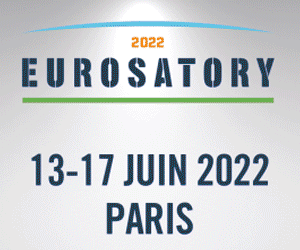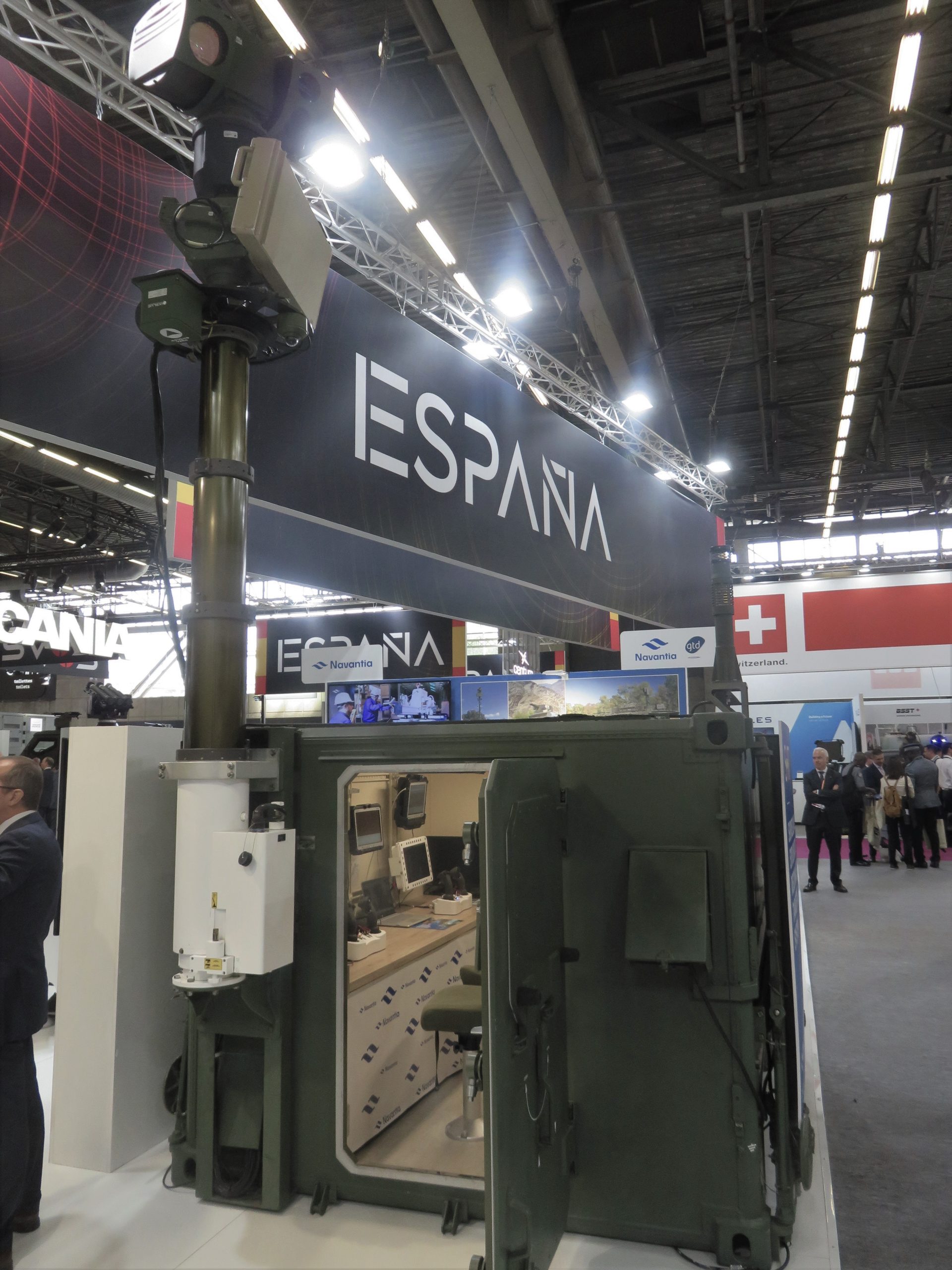Spanish Navantia is showing a shelter-mounted version of its Surveillance Exploration Reconnaissance Targeting System (SERTS) that is in service with the Spanish Army.
Originally developed as a forward observer system mounted on a light vehicle, the system was then integrated with the URO VAMTAC wheeled armoured vehicle as the Vehículo de Exploración y Reconocimiento Terrestre (VERT-Land Reconnaissance and Surveillance Vehicle), of which 17 are in service with the Spanish Army. It has also been integrated into the Spanish Army’s new Dragon 8×8 IFV as a technical demonstrator, again for the forward observation role.
The SERTS consists of a gyro-stabilised mast-mounted sensor cluster integrated with a battle management system and additional portable sensors. The sensor cluster on display includes an electro-optical system including passive infra-red, daylight TV, laser range finder and laser target designator.
Mounted below this is a Teledyne FLIR Ranger R20SS-3D surveillance radar, but a Navantia representative said that this is an example, and the system is agnostic to radar type. The cluster also includes an inertial positioning device and a 360° camera for local surveillance. A separate weather sensor provides meteorological data, and a tactical UAV can also be integrated.
Connected through the platform network the battle management system controls the sensors as well as providing tactical situational awareness.
Although there is no formal requirement for a shelter-mounted version of SERTS the Navantia representative said that it was anticipated that one was likely to emerge, particularly as it could either be a mobile capability when truck-mounted or a static facility for force protection.
Currently the shelter is used as a technical demonstrator and laboratory, and to that end at Eurosatory it has facial recognition software hosted on the battle management system to show the capability of the EO sensor. It has also been used to demonstrate optical communication links.
By Giles Ebbutt









